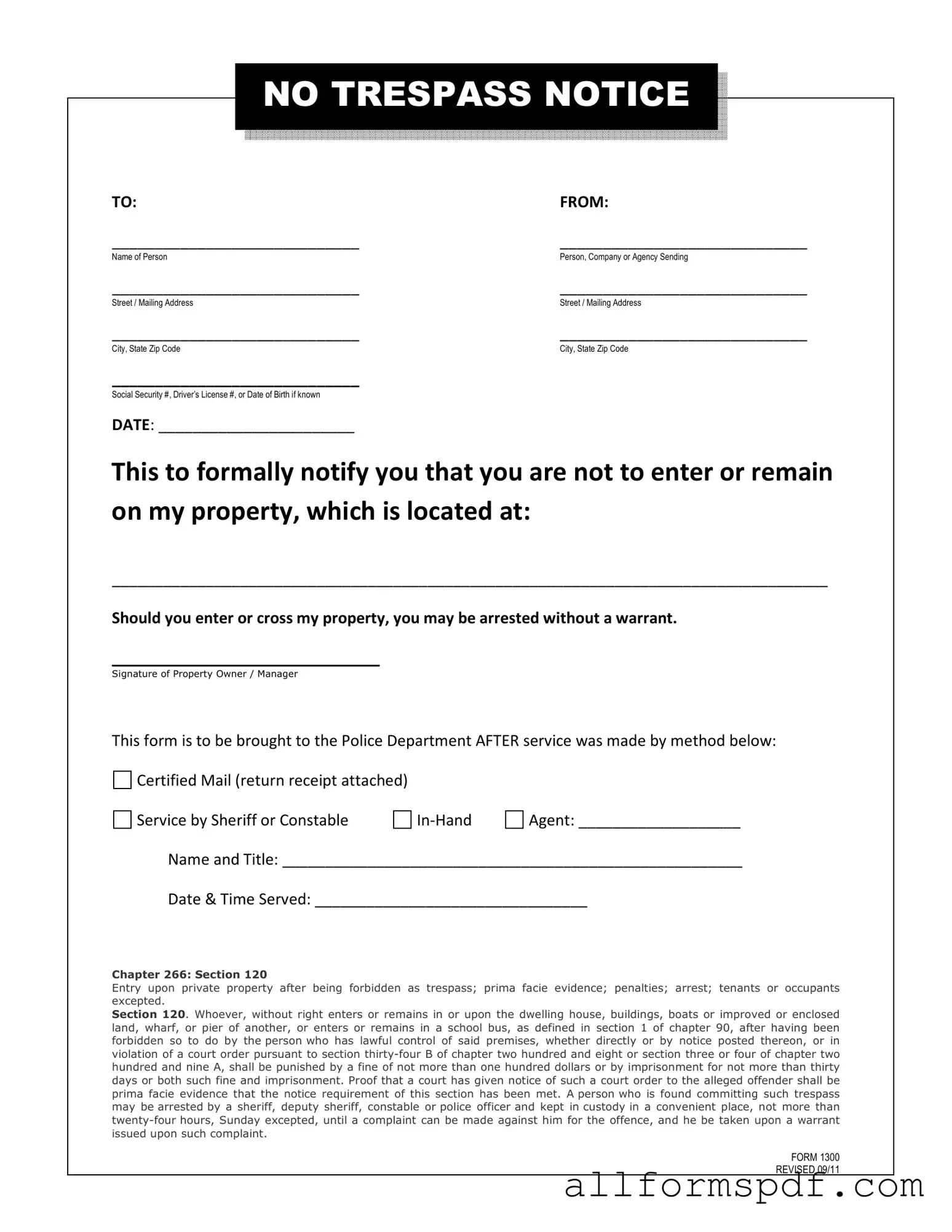Fill Out Your No Trespassing Letter Form
The No Trespassing Letter form serves as a formal notification to individuals that they are prohibited from entering or remaining on a specified property. This document outlines the property owner's rights and the potential consequences for trespassing. It is essential for protecting personal property and ensuring that boundaries are respected.
Create My No Trespassing Letter Now
